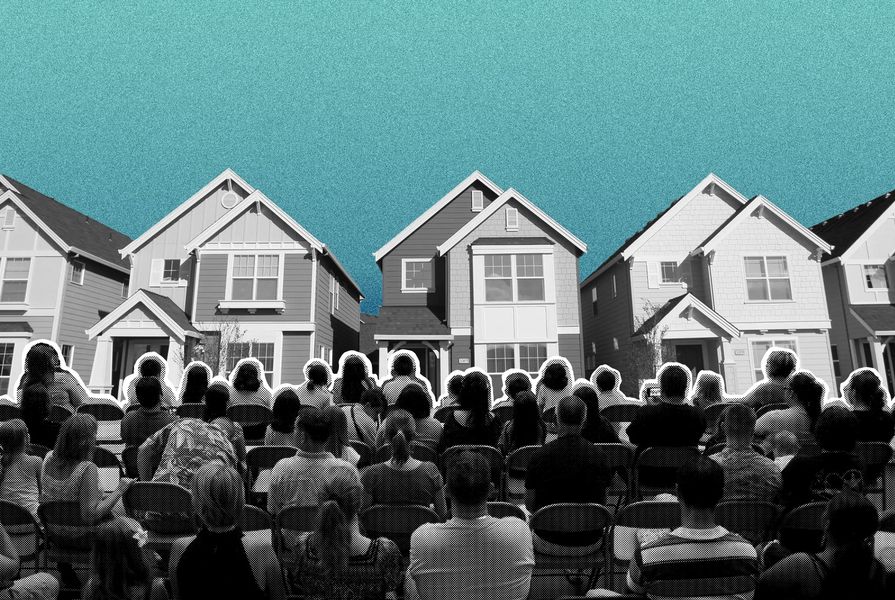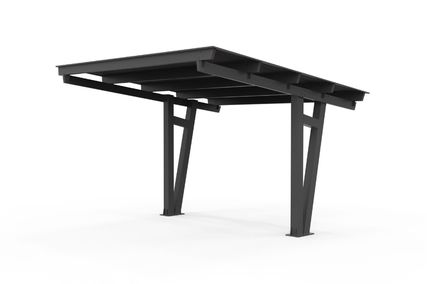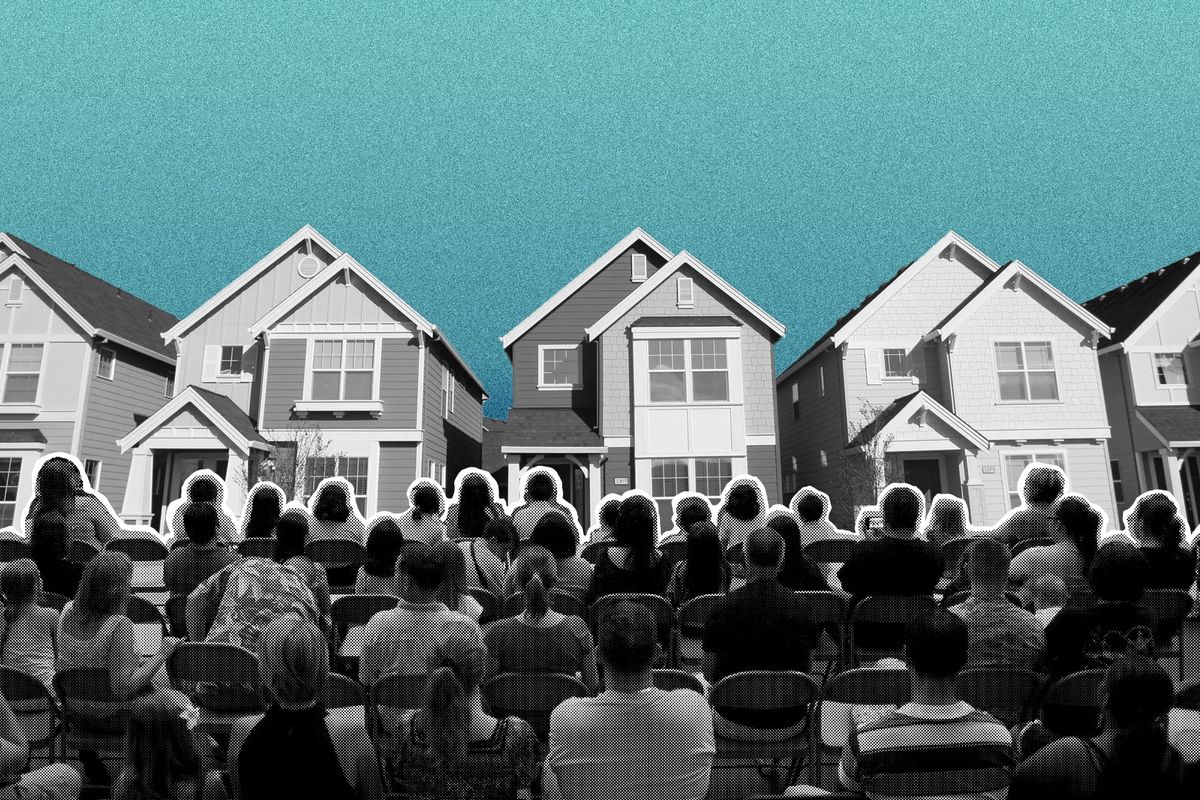Suddenly, housing is hot. Everyone is an expert and every second day brings new headlines on housing policy, delivery, quality, ownership, location, form and cost. You might think this good news for the design professions, which have typically felt ignored and misunderstood by the media. But the recent housing focus has been squarely on quantity, not quality – and even in quantity terms, the proposals have been questionable. Unless we rethink the fundamentals of housing provision, experts warn, nothing will change: the rich will continue to get richer and the poor, the young, the female and the unlucky will be increasingly disadvantaged.
But a new proposal from the crossbenches might offer an opportunity to reset.
Prime minister Albanese’s recently released national housing plan proposes a massive $3 billion incentive for states to override local objections to deliver 1.2 million new homes over five years. Already, the Victorian government has promised to protect developers by removing the rights of neighbours and councils to object provided that the developer has included a proportion of affordable housing in their proposal (though the definition of “affordable”, and the proportion required, remains obscure).
This is an easy political win, made easier by the emergent idea that anyone advocating for heritage or neighbourhood is a smug white boomer concerned only with their own property value. There is some truth to this characterization – although it’s also true that the fastest-growing group of homeless people in Australia is currently older women. But the real, deeper question is whether developer-led housing can ever deliver “affordability” (sometimes defined as a still-whopping 80 percent of market rate) without more fundamental legislative change – in particular, regarding negative gearing and foreign investment.
The evidence suggests not. Rampant up-zoning in Auckland massively increased “supply,” but did little or nothing to increase housing affordability. And it’s obvious why. Developers are profit-driven – if prices drop, building stops. In a globalized market, demand is essentially limitless. So supply by itself is not the key. Notably, Albanese’s attempt to bribe the states hinges not on demonstrated price drops but simply on numbers built – which means more let-rip development but not necessarily any increase in affordability. Essentially, it presumes that the same market-mechanism that got us into this mess can get us out of it. That seems implausible at best and, at worst, capable of destroying our cities for no net betterment.
Clear-headed decision-making on housing is inhibited by the fact that every homeowner in Australia (that’s 66 percent of us) is in a conflict-of-interest position. We all want our own property value to increase, but we also want home values generally to drop within reach of our children and other young people. This conundrum is exacerbated by the 20 percent of taxpayers who own at least one investment property – a proportion that is even more pronounced among our MPs who, in 2017, owned an average of 2.3 properties each. (Opposition home affairs spokesperson Karen Andrews and employment minister Tony Burke reportedly own six properties each.) We don’t know how many of these are negatively geared, but the disincentive to devalue property remains evident.
Meanwhile, the debate is becoming increasingly polarized in an especially vituperative instance of the culture wars. One side sees the other as old, elitist and even racist NIMBYs, while the other sees YIMBYs (“yes in my backyard”) as a cover for the developer lobby.
So, what to do? American philosopher John Rawls famously advised that we should strive to make collective decisions from beneath what he called “the veil of ignorance” – that is, by ignoring our own identity and interests. But this is notoriously difficult to do, especially in our current ultra-cynical democracy that assumes we all vote solely from a position of self-concern.
A possible escape from this impasse has been commissioned from the New Democracy Foundation by 12 crossbench MPs from New South Wales, Tasmania, Western Australia and Victoria. It proposes a citizens’ assembly on housing affordability that would be tasked not with detailed policy but with establishing where our collective priorities lie.
How would it work? Essentially, the idea is to empanel a randomly selected 100 person jury and pose the question, “How can the Federal Government make housing more affordable for all Australians?” The jury would be tweaked to reflect general population ratios in age, gender, living situation and location. The assembly would invite input from government, academia, stakeholders, community groups and anyone else from whom it wishes to hear. With assistance from facilitators, the assembly would then draft its own report, relying on a requirement of 80 percent unanimity. This report would be published and tabled in parliament, with an undertaking from the housing minister and the treasurer to respond, also in public.
One gently vexed question is whether the assembly should include some MPs. The New Democracy Foundation offers both options but suggests yes – for reasons of buy-in and trust, and because it seemed to work well in an Irish example. Personally, in view of our MPs’ aforementioned property-ownership profile, I’d suggest no; unless they, too, were filtered through the stratification sieve, even a few could skew the whole exercise. The alternative, with an MP group playing an informational role, seems preferable.
Why is such an assembly a good idea? Like the judicial jury, it draws on the belief in a popular wisdom – call it common sense – that is nourished by, but potentially more valuable than, expert opinion, especially in matters of natural justice. Further, by being inherently less polarized, the citizens’ assembly model encourages participants – and all of us – to focus a little less on our own self-interest and a little more on the collective good. For this reason, it could bring a more collaborative spirit to the increasingly nasty housing-affordability debate. It could also be encouraged to deliberate on quality – how to achieve greater density and affordability while also improving walkability, sustainability and, I’d like to hope, beauty in the rooms, homes, streets and cities we create.
In the end, though, affordability will require a deep cultural shift from commodification to habitat – from focusing on our homes as our principal investment to seeing them principally as places to be.
















